Disobedient
dispatch 1
Italy in the 1970's
a very sloppy, unprofessional survey
(scroll down for pictures)
When things change, our lives change. I moved from Los Angeles to Germany and what were
my normal routines, smells and cooking pans, are now packed up in boxes. Instead of buying new
cookware for our electric glass stove (our previous stove was gas) I first learned to cook
with my bare hands. That is to say,we burned a lot of pots and continually renewed our set of pots. Nothing stayed.
And so it is with economies. When systems change, our old habits are forced to adjust.
Witness the flood of migrants from country to city that accompanies any agricultural or
industrial revolution. Witness the shifts in culture that seemingly flow naturally from the new
ways of feeding ourselvse. From agriculture to culture and so on… so to say.. and so on.
This dispatch lightly presents the creative production of several artists and collectives
working in toward a new politic (a new way of being) in Italy during the 1970’s. I have been
researching relationship between social creativity and feeling (affect) in times
of change with the help of the Metabolic Studio and the interest of the Disobedience
Archive, National Academy of Fine Arts Milan (NABA) I recently traveled to Italy for a
brief encounter with the topic.
I’m interested in this topic because of debates surrounding social practice today;
specifically on how the creative social practice of artists within post-fordist neo-liberal society
today may or may not be contributing to the continued development of exploitative systems by actively creating within the society... by actively crafting the social within a society so overwritten
with capitalist logic. Is it possible to work affectively in order to construct/participate in the construction of alternative socials concurrent with broadercapitalist culture?
This question is important to me because I see its answers as a central to understanding the
ethics and effects of artists today working in the expanded, extra-institutional field.
1970’s Italy went from the Long ’68 (... a period of extended social change- it has been said
that while the governments of France the USA, Czeckoslovokia etc where able to quicky manage
the social upheavals of 1968, it was different in Italy with a long period of disaffection and
possibity) to the Years of Lead (an extended period of extreme political repression that began in 1978). What seems to be special about the Long ’68 was that while the official government was
managed by both Conservatives and Communists, a significant section of the population
(intellectuals and workers) refused to participate in normal order and insisted on an
extra-parliamentary politic, they had no illusions that political solutions might be found within
extant systems,
but instead had to be created on the outside. The aesthetical explorations of the extra-parliamentary left were large but have been characterized in several strands; irony and/or critical of or creative with broadcast medias.
In the process of conducting research for this ongoing project, I interviewed filmmaker and theorist Angela Metroupolous around the subject of affect and social change. In response to a question
regarding what is the use in looking at feelings (affect) in disobedient atwork, she responded;
“The question of affect is fundimental to thinking about change. In the way that you have to gain an understanding about your own relation to affect in order to choose the right thing to do in the right moment. If your is a moment of escape, you have to be intuitive to know where to go.... Capitalism deteritorializes its systems and the behaviors are recoded in a sense. Things that were formally related in a strict senses are suddenly appear very different... I really agree deeply that everything is flux, everything is in movement, everything is nothing without our capacities to see it as objects or solids. As you know, with a certain type of drug, things become a fluid collective experience."
I present below a few notes on particular artists featured in the current instance of the Disobedience Archive, on display at the Castello di Rivoli in Rivoli Italy. These are not by any stretch of the imagination thorough and my facts might be wrong. My notes focus on how I understood these artists work as attempts to negotiate the altered and potentially altered terrains of daily life and work and then share their investigations in order to create something better:
________________
Piero Gilardi
A key figure in the Arte Povera, or so I'm told. During the years of the movements,
he devoted much of his creative work to political militancy. He is still involved
in local environmental struggles.
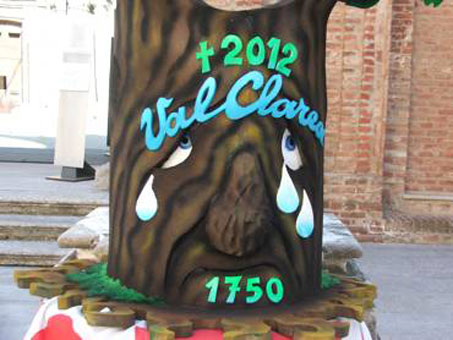
Tree sculpture for a recent NOTAV protest (link)
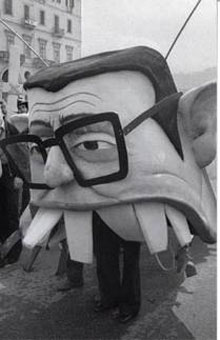
Work in the Disobedience Archive documents his political poster work for street performances including
Andreottile with the Collettivo La Comune in Turin.
________________
Joseph Beuys
Much to my surprise, I found out that Joseph Beuys made an art-work edition
to support Lotta Continua’s newspaper. Lotta Continua were one of the main
extra-parliamentary worker organizations in the Italian millieu.
(wikipeadia link)
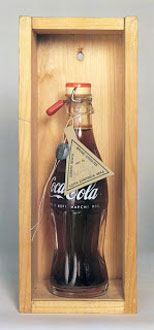
Beuy's editioned artwork for Lotta Continua
________________
Gianfranco Baruchello
Gianfranco left the “art world” in the 70’s to squat farm lands and orchards.
Used his time as a farmer to investigate and re-imagine social relations
counter to capitalist value.
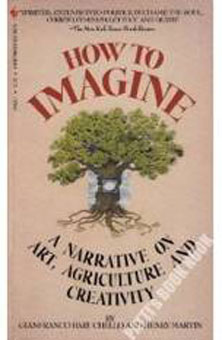
I was told that didn’t allow money to be exchanged for the agricultural goods he grew.
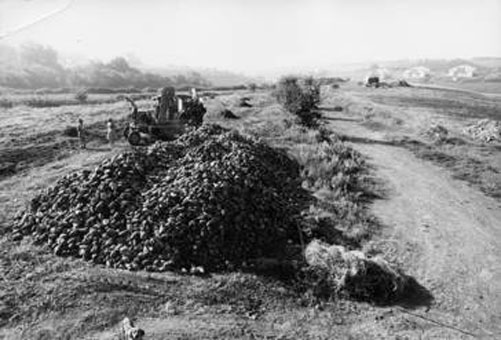
________________
Laboritotio di Comunicazione Militante
Translated to Laboratory of Militant Communication, the Laboratory was a
collective from Milan who would post on the street documentation of how the
media manipulated images to alter the public perception regarding the
movements.
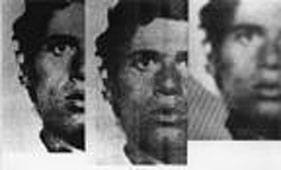
From the Disobedience archive…"this is an image of how the media altered the image of a radical"
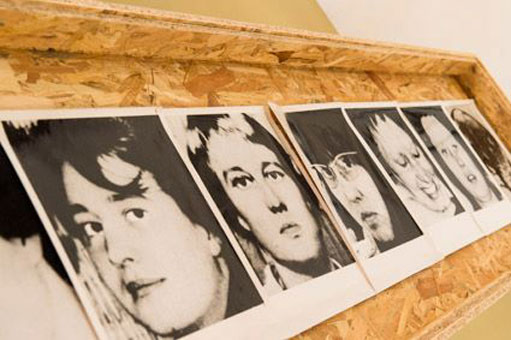
Ulrike Meinhof imagery…”they wanted to open her skull to understand.”
________________
Revolta Feminina
(Carla Lonzi and Carla Accardi)
A feminist collective involved in publishing and organizing.
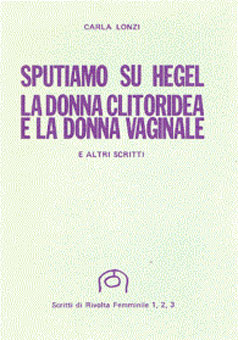
________________
Nanni Balestrini
An avant-garde poet and movement philosopher, involved in the foundings of Potere Operaio.
Enzo Mari
I had a difficult time understanding what exactly the designer’s work in the
Disobedience Archive show was, but I loved the description… “The Kit of
Auto-production. The tools of political militancy. A kit to build class struggle/strike.
It produces antagonism. “
Here is his his d.i.y. design kit

For the 1977 venice Biennial, Mari made several 100 pieces of polished marble, that when they fit
together, formed a hammer and sickle.
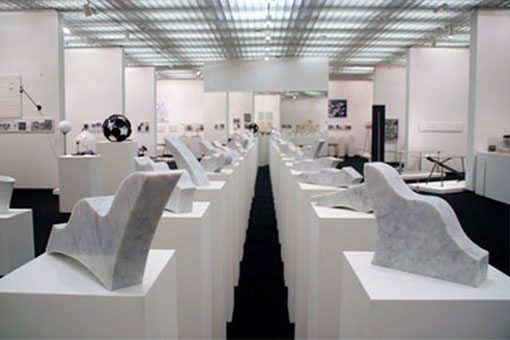
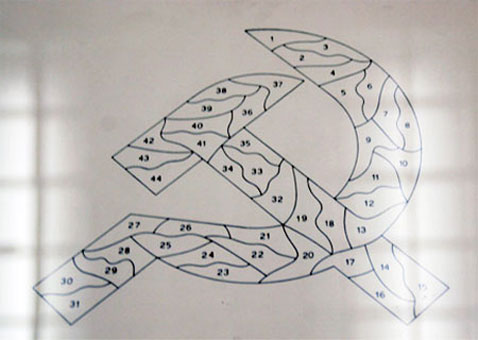
________________
Gordon Matta Clark
In 1975, Matta-Clark worked in Milan with a group of young communists in attempt to reclaim an abandoned factory and begin a social center.
"An experience in Milan gave Matta Clark an interesting thought of how his work could develop in the future. After founding a factory complex to cut-up it turned out to be occupied by a group of radical Communist youths. They wanted to prevent possible intervention of real estate developers from exploiting the property. Instead they wanted the area to be used for a much needed community service center. Matta Clark: “My exposure to this confrontation was my first awakening to doing my work, not in artistic isolation, but through an active exchange with peoples’ concern for their own neighbourhood”. (link to quote source)
________________
Radio Libere, Radio Alice, Felix Guattari
Guatari and co-wrote several plays for Radio Alice and others, intended, I was told, to map out in a dramatic way the affectual fields of revolution and change.